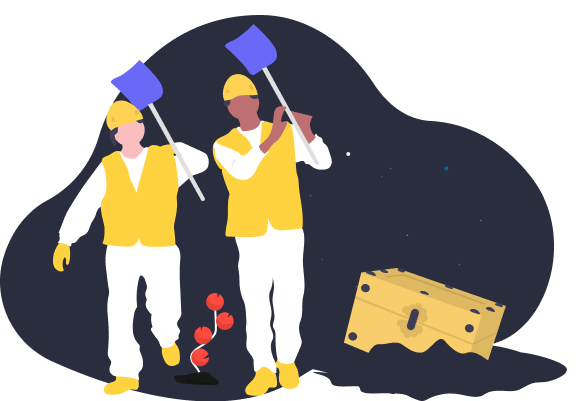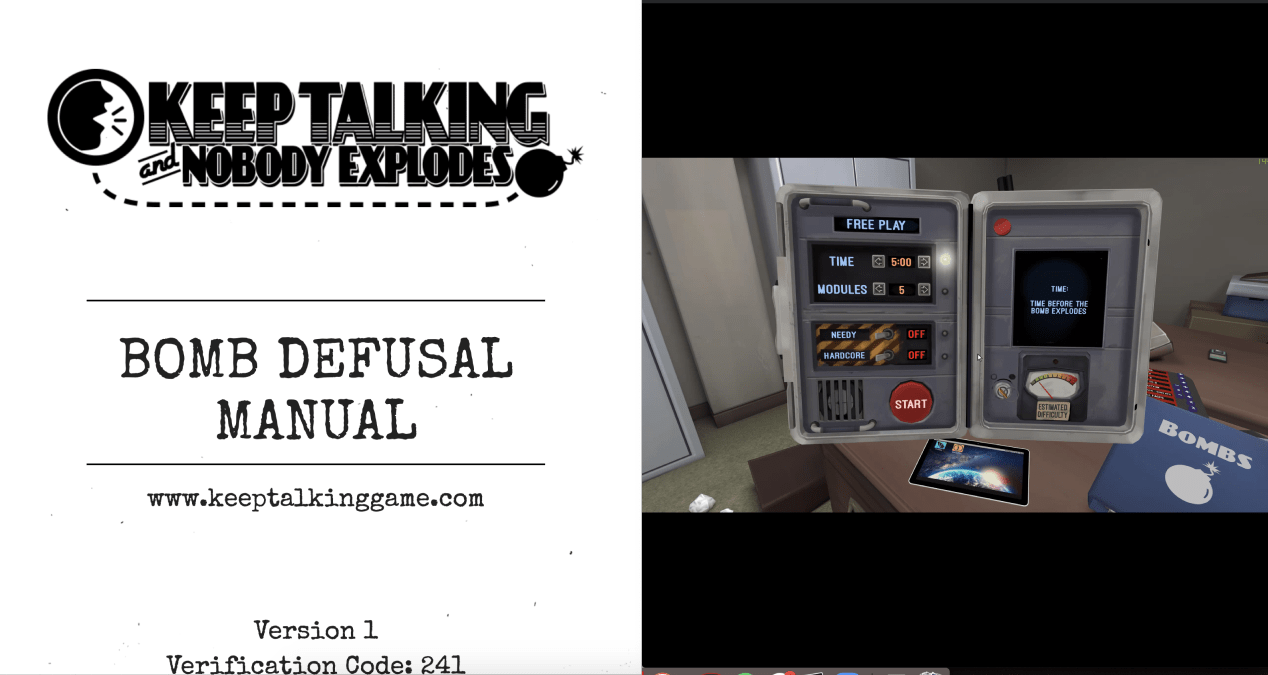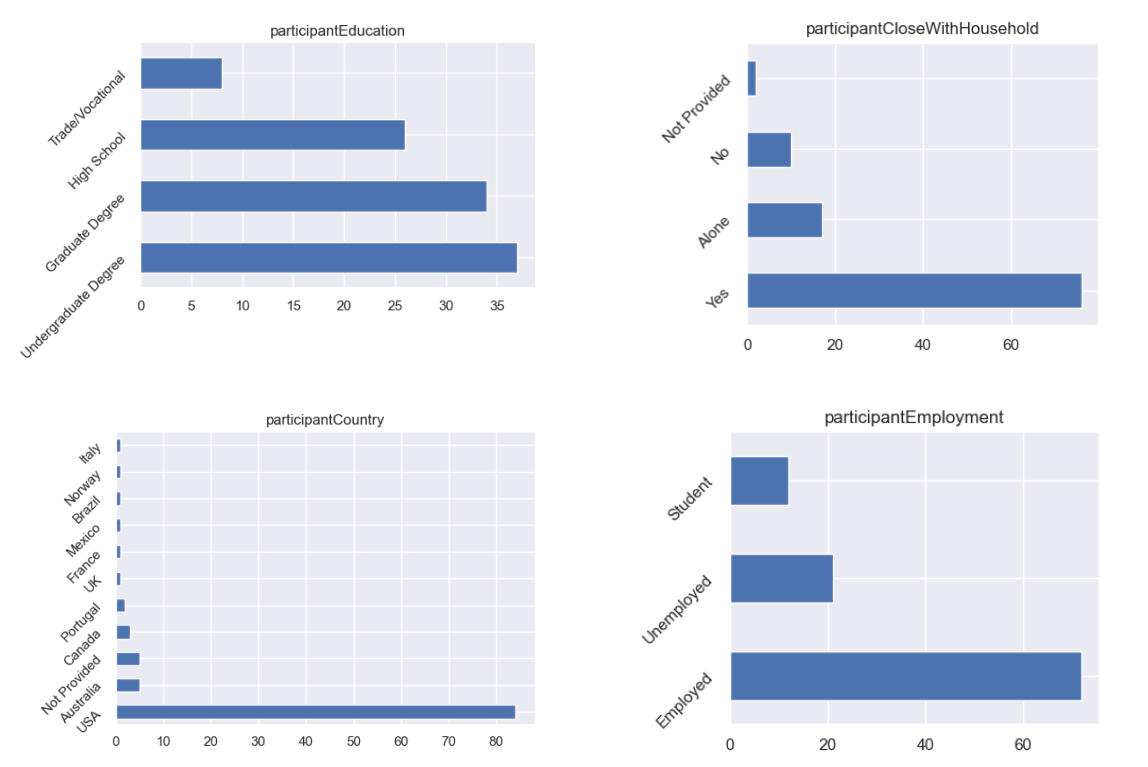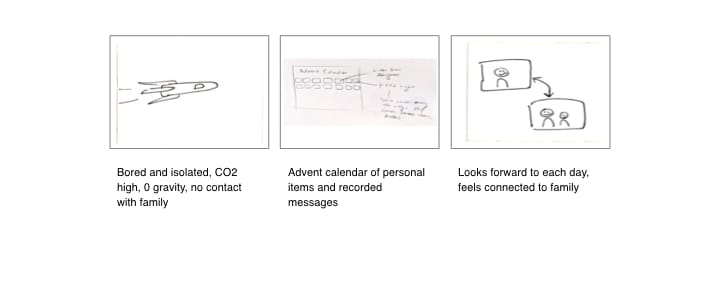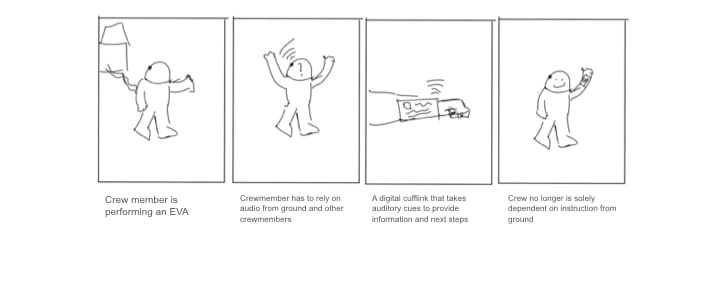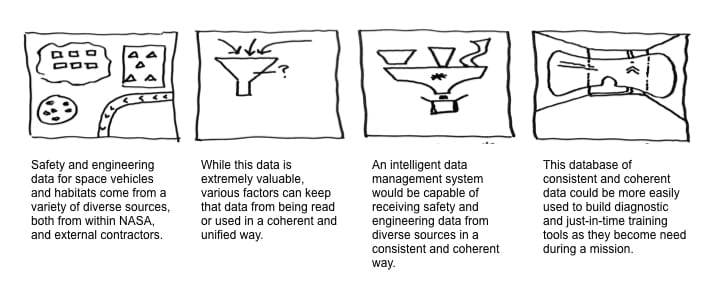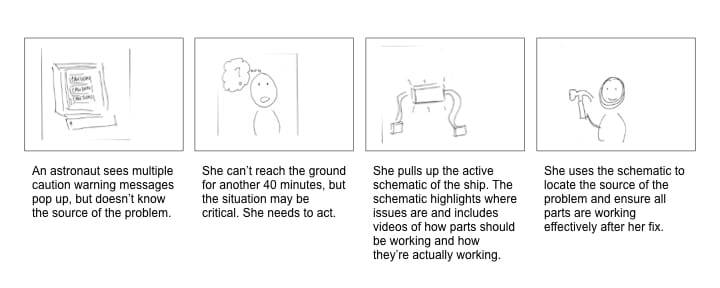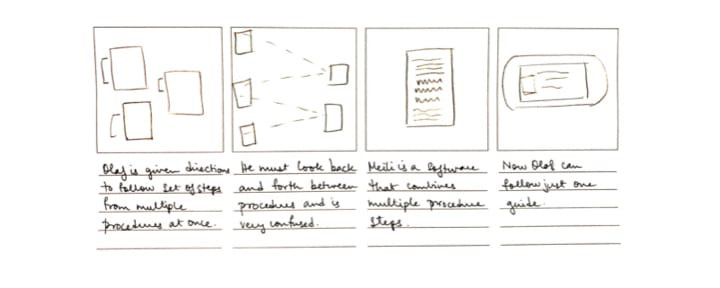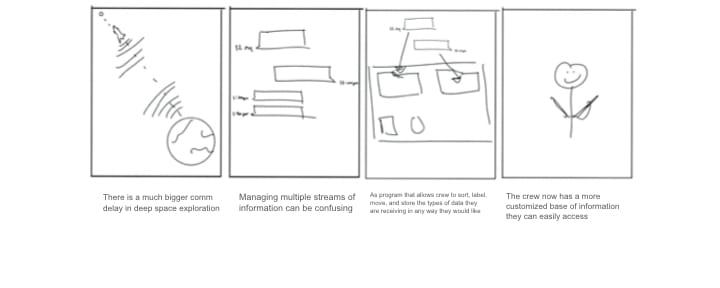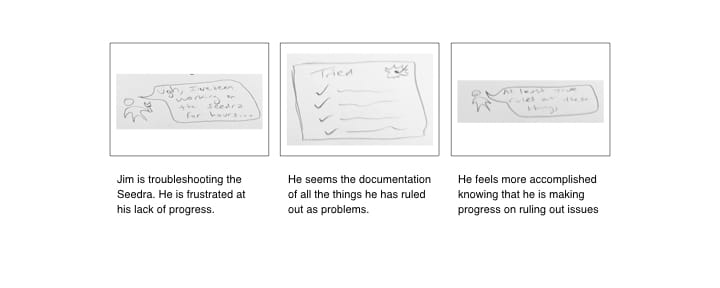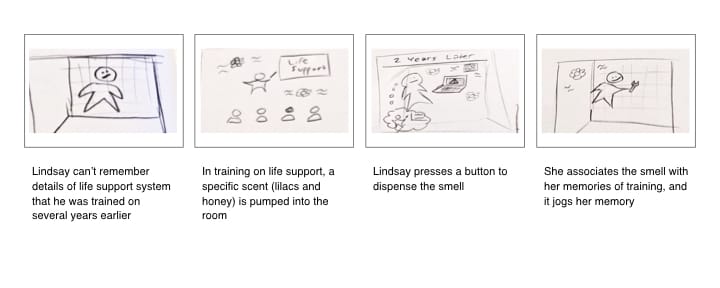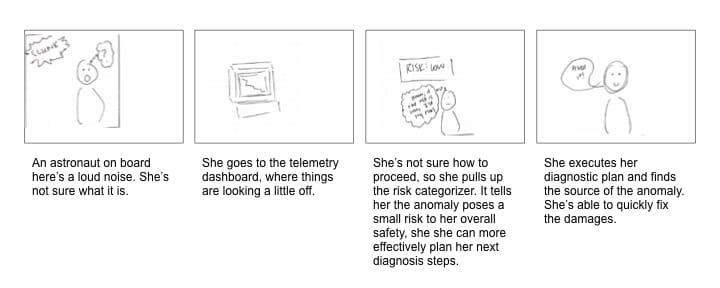Experience Design
Visual Design
Research
NASA
(Capstone at Carnegie Mellon University)
8 months (2020)
Katie McTigue, JT Aceron
Megan Parisi, Nathan Barnhart
Problem
A mission to Mars means communication delays, so astronauts will have to work autonomously while diagnosing problems.
Research
We went to the Johnson Space Center in Houston and talked to astronauts to understand the problem space better.
Building Empathy
We built empathy with astronauts by playing an empathy building game and conducting a quarantine diary study.
Evaluating Needs
We tested emerging needs by presenting storyboards to astronauts and thought leaders from Mission Control.
Key Insights
Current system relies heavily on ground and following procedures, which limits crew’s opportunity to think critically.
Narrowed Problem Space
Situating diagnostic tools in a workflow to support crew members to think critically, document and follow best practices.






